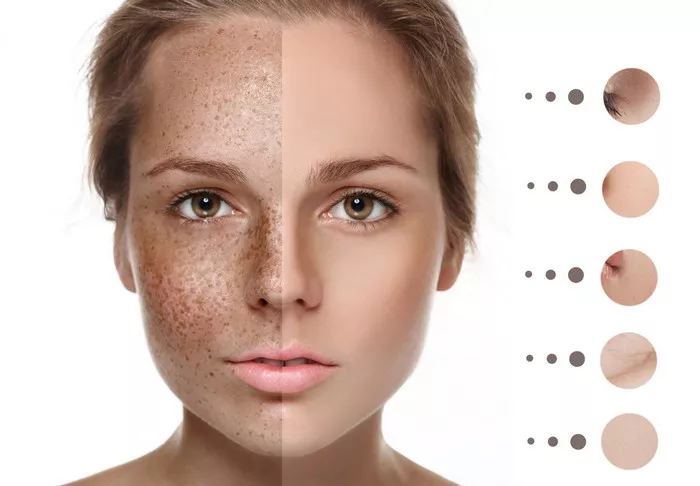Freckles, often regarded as charming speckles on the skin, can sometimes be a source of concern for individuals seeking a more even complexion. The quest for freckle removal is a common one, prompting many to explore various treatment options in pursuit of clearer, blemish-free skin. But just how effective are these treatments? In this comprehensive guide, we delve into the world of freckle removal, examining the effectiveness of different methods and treatments to help individuals make informed decisions about achieving their desired skin goals.
Understanding Freckles
Freckles, known scientifically as ephelides, are small, flat, tan or light brown spots that develop on sun-exposed areas of the skin, such as the face, arms, and shoulders. They are caused by an increase in melanin production in response to UV radiation from the sun. While freckles are harmless and often genetic, some individuals may seek to reduce or remove them for cosmetic reasons.
Types of Freckle Removal Treatments
Laser Therapy: Laser therapy, or laser skin resurfacing, is a popular method for removing freckles. It works by targeting the melanin in the freckles with high-intensity light, causing them to break apart and fade over time.
Cryotherapy: Cryotherapy involves freezing the freckles with liquid nitrogen, causing them to blister and eventually peel off. This method is typically used for larger freckles or clusters of freckles.
Chemical Peels: Chemical peels use a chemical solution to exfoliate the outer layer of the skin, removing freckles and revealing smoother, clearer skin underneath.
Effectiveness of Treatments
The effectiveness of freckle removal treatments can vary depending on several factors, including the type and severity of the freckles, the individual’s skin type, and their response to the treatment.
Laser Therapy: Laser therapy is generally considered highly effective for removing freckles, particularly when performed by a qualified dermatologist or skincare specialist. Multiple sessions may be required to achieve optimal results, and some individuals may experience temporary redness or swelling after treatment.
Cryotherapy: Cryotherapy can be effective for removing freckles, but it may not be suitable for all types of freckles or skin tones. Some individuals may experience mild discomfort during the procedure, and there is a risk of scarring or changes in skin pigmentation.
Chemical Peels: Chemical peels can effectively remove superficial freckles and improve overall skin tone and texture. However, deeper or more stubborn freckles may require multiple treatments or additional interventions.
Risks and Side Effects
While freckle removal treatments are generally safe when performed by trained professionals, there are potential risks and side effects to consider:
Skin Irritation: Some individuals may experience temporary redness, swelling, or irritation at the treatment site following laser therapy, cryotherapy, or chemical peels.
Changes in Pigmentation: There is a risk of hypopigmentation (lightening of the skin) or hyperpigmentation (darkening of the skin) with certain treatments, particularly laser therapy and cryotherapy.
Scarring: In rare cases, freckle removal treatments may result in scarring, especially if the skin is not properly cared for during the healing process.
Cost
The cost of freckle removal treatments can vary depending on factors such as the type of treatment, the number of sessions required, and the geographic location of the provider. Generally, laser therapy tends to be more expensive than cryotherapy or chemical peels.
Alternatives
In addition to professional treatments, there are alternative methods for reducing the appearance of freckles:
Makeup: Concealers, foundations, and tinted moisturizers can help camouflage freckles and create a more even skin tone.
Skincare Products: Over-the-counter or prescription skincare products containing ingredients such as retinoids, vitamin C, and niacinamide can help fade freckles and improve overall skin tone with consistent use.
Conclusion
Freckle removal treatments can be effective for reducing the appearance of freckles and achieving a clearer, more even complexion. However, it’s essential to consult with a qualified dermatologist or skincare specialist to determine the most suitable treatment approach based on individual skin type, freckle severity, and treatment goals. With the right treatment plan and proper care, individuals can effectively address their freckle concerns and enjoy smoother, more radiant skin.
FAQs
1. Can freckles be removed permanently?
While various treatments can reduce the appearance of freckles, such as laser therapy or chemical peels, freckles cannot be permanently removed. Freckles are caused by an overproduction of melanin in the skin, and while treatments can fade them, new freckles may develop over time, especially with sun exposure.
2. Does freckle removal work?
Freckle removal treatments, such as laser therapy, intense pulsed light (IPL), or chemical peels, can effectively lighten or reduce the appearance of freckles. These treatments work by targeting the melanin in the skin, causing it to break up and fade over time. However, multiple sessions may be required for optimal results.
3. Do freckles come back after removal?
Freckles may reappear after removal treatments, especially with sun exposure. While treatments can fade existing freckles, new ones may develop over time, particularly in individuals prone to freckling. To minimize the recurrence of freckles, it’s essential to use sun protection measures such as sunscreen, hats, and protective clothing.
4. How can I permanently remove freckles in Singapore?
While freckles cannot be permanently removed, several clinics in Singapore offer advanced treatments such as laser therapy, IPL, or chemical peels to lighten or reduce their appearance. These treatments are performed by qualified dermatologists or aesthetic practitioners and can provide significant improvement in freckle visibility. To explore permanent freckle reduction options, schedule a consultation with a reputable clinic in Singapore to discuss your concerns and treatment goals.


